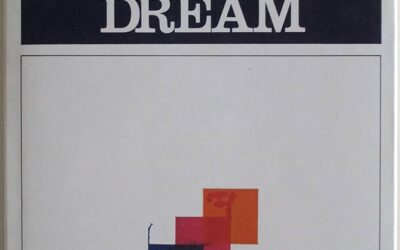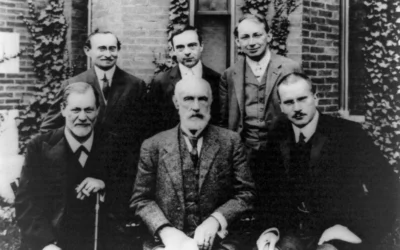 Leary’s Forgotten Theory of Personality
Leary’s Forgotten Theory of Personality
Main Points and Key Ideas:
- Timothy Leary developed a groundbreaking personality typology system that was often overshadowed by his controversial public image.
- Leary’s system aimed to capture the complex interplay of interpersonal, emotional, and cognitive factors in shaping personality.
- His work was influenced by Carl Jung’s concepts and collaborations with Ram Dass (Richard Alpert).
- Leary’s system challenged rigid categorizations of traditional personality theories, emphasizing fluidity and adaptability.
- The Interpersonal Circumplex Model is a key component, based on two dimensions: Dominance and Affiliation.
- Leary proposed five levels of personality, from public communication to core values and beliefs.
- The system introduces the concept of interpersonal reflexes and complementarity in relationships.
- Leary developed assessment tools: the Interpersonal Adjective Scales (IAS) and Interpersonal Behavior Inventory (IBI).
- The system considers situational factors and individual flexibility in interpersonal styles.
- Leary aimed to bridge depth psychology with empirical science in his approach.
- Key publications include “Interpersonal Diagnosis of Personality” (1957) and “Neurologic” (1973).
- Leary’s work challenged traditional paradigms and inspired further research in personality psychology.
- The system can be applied in therapeutic settings and organizational contexts for personal growth and team development.
- Critics note the complexity of the system and potential oversimplification of human personality.
- Leary’s emphasis on dialogue and interaction in understanding personality remains relevant for personal and professional growth.
Timothy Leary, a brilliant psychologist, and controversial figure, left an indelible mark on the field of personality psychology. Born in 1920, Leary’s life was a tapestry of academic pursuits, unorthodox experiments, and public scandals that often overshadowed his significant contributions to the understanding of the human psyche. Despite his notoriety for his involvement with psychedelic drugs, his work as a CIA informant, and his dramatic prison escape, Leary’s groundbreaking personality typology system remains a testament to his innovative thinking and profound insights into the complexities of human nature.
Leary’s early career was marked by a keen interest in the nature of interpersonal relationships and the factors that shape individual differences. As a professor at Harvard University in the 1960s, he began to question the prevailing schools of thought in psychology, particularly behaviorism and Freudian psychoanalysis. Leary found these approaches limiting and inadequate in addressing the profound questions of consciousness and self-awareness that he sought to explore.
It was during this time that Leary developed his personality assessment tool, the “Leary Interpersonal Behavior Test,” which would later serve as the foundation for his comprehensive typology system. Ironically, Leary himself would manipulate this test during his incarceration in the early 1970s, successfully convincing prison officials of his rehabilitation and securing an early release. This episode, along with his notorious prison escape and subsequent recapture, cemented Leary’s reputation as a cunning and controversial figure in the public eye.
Despite the sensationalism surrounding his personal life, Leary’s personality typology system represented a significant advancement in the field of personality psychology. Drawing upon the works of Carl Jung and influenced by his collaborations with colleagues like Ram Dass (Richard Alpert), Leary proposed a multidimensional model of personality that sought to capture the complex interplay of interpersonal, emotional, and cognitive factors in shaping the self.
However, Leary’s groundbreaking theory was often overshadowed by his more controversial pursuits and the scandals that plagued his career. His experimentation with psychedelic substances, which he believed held the key to unlocking the mysteries of consciousness, attracted both fascination and condemnation from the scientific community and the general public. Furthermore, revelations of his involvement with the CIA’s mind control research project, MKUltra, cast a shadow over his academic credibility.
As a result, Leary’s personality typology system remained largely understudied and underappreciated during his lifetime. Many of his contemporaries dismissed his ideas as the ramblings of a man who had lost his way, consumed by his own ego and the allure of celebrity status. It was only in later years, as the field of psychology began to embrace more holistic and integrative approaches, that Leary’s contributions started to gain recognition.
Today, as we reexamine Leary’s work with fresh eyes, we can appreciate the depth and complexity of his personality typology system. By challenging the rigid categorizations of traditional theories and emphasizing the fluid and dynamic nature of the self, Leary opened up new avenues for understanding the richness of human experience. His system, though imperfect and incomplete, laid the foundation for further exploration and innovation in the field of personality psychology.
Influences on Leary’s Personality Typology System
Carl Jung’s Impact on Leary’s Thought Leary’s personality typology system was heavily influenced by the works of Swiss psychiatrist Carl Jung, who founded the field of analytical psychology. Jung’s concepts of archetypes, the collective unconscious, and the individuation process resonated deeply with Leary. He recognized the significance of these ideas in understanding the depths of the human mind and sought to incorporate them into his own framework. By drawing upon Jungian principles, Leary aimed to create a more comprehensive and nuanced approach to personality assessment.
Ram Dass (Richard Alpert) and the Exploration of Consciousness Another significant influence on Leary’s personality typology system was his close relationship with Ram Dass, formerly known as Richard Alpert. Together, Leary and Ram Dass embarked on a profound exploration of consciousness, delving into the realms of spirituality and self-discovery. Their collaborations and shared insights played a crucial role in shaping Leary’s perspective on the nature of the self. The influence of Eastern philosophies, particularly those from India, can be seen woven throughout Leary’s work, adding a transcendent dimension to his understanding of personality.
Comparing Leary’s System to Other Personality Typologies The Myers-Briggs Type Indicator (MBTI) When compared to other well-known personality typology systems, such as the Myers-Briggs Type Indicator (MBTI), Leary’s approach stands out for its unique focus and methodology. The MBTI relies on four dichotomies – Extraversion/Introversion, Sensing/Intuition, Thinking/Feeling, and Judging/Perceiving – to categorize individuals into one of sixteen personality types. While the MBTI has gained widespread popularity, Leary’s system sought to move beyond these rigid categorizations and embrace a more fluid and dynamic understanding of personality.
The Enneagram Another prominent personality typology system is the Enneagram, which identifies nine distinct personality types and explores their interconnections. While the Enneagram provides valuable insights into the motivations and fears underlying human behavior, Leary’s system took a different approach. Rather than focusing on a fixed set of types, Leary proposed a multi-dimensional model that considered an individual’s interpersonal behavior, emotional states, and cognitive processes. This holistic perspective allowed for a more comprehensive understanding of the complexities of personality.
Unique Features and Limitations of Leary’s System Leary’s personality typology system stood out for its dynamic and nuanced approach to understanding the self. Unlike other systems that relied on rigid categorizations, Leary’s framework acknowledged the fluidity and adaptability of human personality. However, this complexity also presented challenges in terms of empirical validation and widespread adoption. The intricacies of Leary’s system made it more difficult to apply in practical settings, limiting its mainstream appeal compared to more straightforward typologies like the MBTI.
Addressing the Shortcomings of Existing Personality Theories The Limitations of Rigid Categorizations Leary was highly critical of traditional personality theories that relied on fixed categories and labels. He believed that these approaches failed to capture the true essence of human nature, which is inherently multifaceted and ever-changing. Leary argued that by pigeonholing individuals into predefined types, these theories overlooked the rich tapestry of experiences, emotions, and behaviors that make each person unique. His personality typology system sought to address these limitations by providing a more flexible and inclusive framework for understanding the self.
Capturing the Complexity and Fluidity of Human Personality
Leary’s primary goal in developing his personality typology system was to create a comprehensive and adaptive model that could accommodate the vast spectrum of human diversity. He recognized that personality is not a static entity but rather a dynamic interplay of various factors, including interpersonal relationships, emotional states, and cognitive processes. By acknowledging the fluidity and complexity of the human psyche, Leary’s system aimed to provide a more accurate and nuanced representation of personality than the prevailing theories of his time.
The Core Concepts of Leary’s Personality Typology System Personality as a Function of Interpersonal Interactions
At the heart of Leary’s personality typology system is the idea that personality is largely shaped by an individual’s interactions with their environment. Leary posited that people adopt different interpersonal strategies based on their goals, desires, and fears. These strategies, in turn, influence their behavior and emotional experiences. By examining the patterns of interpersonal relationships, Leary believed that one could gain valuable insights into the underlying structure of personality.
Using Leary’s Model
Applying Leary’s Personality Typology System
Now that we have explored the key components and principles of Timothy Leary’s personality typology system, let’s delve into how to apply this framework in practical settings. Whether you are a mental health professional, a corporate consultant, or an individual seeking personal growth, understanding how to utilize Leary’s system can provide valuable insights and guide interpersonal interactions.
The Circumplex Model of Cognition
The Interpersonal Circumplex Model
The interpersonal circumplex model is the foundation of Leary’s system. It consists of two primary dimensions: Dominance (Dom) and Affiliation (Lov). Dominance represents the degree of assertiveness and control in interpersonal relationships, while Affiliation represents the level of warmth and friendliness. These dimensions intersect to form a circular model with eight interpersonal styles:
Dominant (D): Assertive, controlling, and confident
Dominant-Friendly (DF): Leaderly, guiding, and supportive
Friendly (F): Warm, cooperative, and agreeable
Friendly-Submissive (FS): Trusting, naive, and dependent
Submissive (S): Passive, compliant, and self-effacing
Submissive-Hostile (SH): Skeptical, resentful, and distrustful
Hostile (H): Cold, aggressive, and oppositional
Hostile-Dominant (HD): Competitive, exploitative, and ruthless
Each style represents a unique combination of Dominance and Affiliation, and individuals can exhibit varying degrees of each style depending on the situation and relationship.
The Five Levels of Personality
Leary’s system goes beyond surface-level behavior and delves into the deeper layers of personality. He proposed five levels of personality:
Level I: Public Communication – The overt, observable behavior and communication style in social situations.
Level II: Conscious Descriptions – An individual’s self-reported thoughts, feelings, and perceptions.
Level III: Preconscious – Symbolic expressions, such as fantasies, projections, and dreams.
Level IV: Unexpressed Unconscious – Repressed or denied aspects of personality that are not readily accessible.
Level V: Values and Beliefs – The core ethical principles, philosophical views, and spiritual beliefs that guide behavior.
By considering these five levels, Leary’s system provides a comprehensive understanding of an individual’s personality, from their public persona to their deepest values and beliefs.
Interpersonal Reflexes and Complementarity
Leary’s system emphasizes the dynamic nature of interpersonal relationships. He introduced the concept of interpersonal reflexes, which are automatic reactions to others’ behavior that tend to invite or provoke complementary responses. For example, dominant behavior often elicits submissive responses, while friendly behavior tends to invite friendly reactions in return.
This complementarity principle suggests that individuals are likely to respond to others’ behavior with corresponding actions, creating patterns of interaction that reinforce and perpetuate certain interpersonal styles.
Flexibility and Rigidity
Leary’s system acknowledges that individuals vary in their ability to adapt their interpersonal style to different situations and relationships. Flexible individuals are able to adjust their behavior to meet the demands of various contexts, while rigid individuals tend to rely on a narrow range of interpersonal behaviors regardless of the situation.
Assessing an individual’s flexibility or rigidity can provide insight into their ability to navigate diverse interpersonal challenges and can inform strategies for personal growth and development.
Situational Factors
While interpersonal styles can be relatively stable across time and situations, Leary’s system recognizes the importance of situational factors in shaping behavior. Social norms, cultural expectations, and the specific dynamics of a relationship can all influence an individual’s interpersonal style.
Considering the impact of situational factors allows for a more nuanced understanding of an individual’s behavior and can help explain variations in interpersonal style across different contexts.
Assessment and Application
Leary developed two primary assessment tools to measure interpersonal styles: the Interpersonal Adjective Scales (IAS) and the Interpersonal Behavior Inventory (IBI). The IAS is a self-report measure that asks individuals to rate themselves using adjectives related to interpersonal behavior, while the IBI is an observer-rating measure that allows others to assess an individual’s interpersonal style based on their perceptions.
These assessment tools can be used in various settings, such as clinical therapy, organizational consulting, and personal development, to gain insight into an individual’s interpersonal tendencies and inform strategies for growth and change.
The Step’s of Leary’s Model
Step 1: Familiarize Yourself with the Interpersonal Circumplex Model
The first step in applying Leary’s system is to thoroughly understand the interpersonal circumplex model. This model consists of two primary dimensions: Dominance (Dom) and Affiliation (Lov). Dominance represents the degree of assertiveness and control in interpersonal relationships, while Affiliation represents the level of warmth and friendliness.
Within the circumplex, there are eight interpersonal styles: Dominant (D), Dominant-Friendly (DF), Friendly (F), Friendly-Submissive (FS), Submissive (S), Submissive-Hostile (SH), Hostile (H), and Hostile-Dominant (HD). Each style represents a unique combination of Dominance and Affiliation, and understanding these styles is crucial for recognizing and interpreting interpersonal patterns.
Step 2: Assess Interpersonal Style Using the IAS or IBI
To determine an individual’s interpersonal style, Leary developed two assessment tools: the Interpersonal Adjective Scales (IAS) and the Interpersonal Behavior Inventory (IBI). The IAS is a self-report measure that asks individuals to rate themselves using a list of adjectives related to interpersonal behavior. The IBI, on the other hand, is an observer-rating measure that allows others to assess an individual’s interpersonal style based on their perceptions.
When using these assessment tools, it is essential to consider the specific context and relationship in which the individual is being evaluated. People may exhibit different interpersonal styles in various situations and with different people, so it is important to gather data from multiple sources and across different contexts to gain a comprehensive understanding of an individual’s interpersonal tendencies.
Step 3: Identify Interpersonal Patterns and Complementarity
Once you have assessed an individual’s interpersonal style, the next step is to identify patterns and complementarity in their relationships. According to Leary’s system, people tend to respond to others’ behavior with complementary actions. For example, dominant behavior often invites submissive responses, while friendly behavior tends to elicit friendly reactions in return.
By recognizing these interpersonal patterns, you can gain insight into the dynamics of an individual’s relationships and predict potential challenges or conflicts. This information can be valuable in therapeutic settings, as it can help clients understand their interpersonal tendencies and work towards developing more flexible and adaptive behaviors.
Step 4: Explore the Five Levels of Personality
Leary’s system extends beyond the interpersonal circumplex and includes five levels of personality. These levels range from the overt, observable behavior (Level I: Public Communication) to the core ethical principles and beliefs that guide an individual’s actions (Level V: Values and Beliefs).
When applying Leary’s system, it is important to consider all five levels of personality to gain a comprehensive understanding of an individual. By exploring these levels through dialogue, observation, and assessment, you can uncover deeper insights into an individual’s motivations, fears, and unconscious patterns.
Step 5: Consider Situational Factors and Flexibility
While interpersonal styles can be relatively stable across time and situations, it is crucial to recognize the role of situational factors in shaping behavior. Social norms, cultural expectations, and the specific dynamics of a relationship can all influence an individual’s interpersonal style.
Moreover, individuals vary in their flexibility and ability to adapt their interpersonal style to different contexts. Some people may be more rigid, relying on a narrow range of behaviors regardless of the situation, while others may be more flexible and able to adjust their style to meet the demands of different relationships.
When applying Leary’s system, consider the situational factors at play and assess an individual’s flexibility in navigating different interpersonal contexts. This information can be valuable in helping individuals develop greater adaptability and improve their interpersonal effectiveness.
Step 6: Develop Interventions and Strategies for Growth
Armed with a comprehensive understanding of an individual’s interpersonal style, patterns, and flexibility, you can develop targeted interventions and strategies for personal growth. In therapeutic settings, this may involve helping clients recognize and modify maladaptive interpersonal patterns, develop greater self-awareness, and build more effective communication skills.
In organizational contexts, applying Leary’s system can inform team-building efforts, leadership development programs, and conflict resolution strategies. By understanding the interpersonal dynamics at play within a team or organization, consultants can help foster more collaborative, productive, and harmonious work environments.
Step 7: Monitor Progress and Adapt as Needed
As with any personal growth or organizational change effort, it is essential to monitor progress and adapt strategies as needed. Regularly reassessing interpersonal styles, patterns, and flexibility can help gauge the effectiveness of interventions and identify areas for further development.
Mapping Interpersonal Patterns and Their Impact on Personality
Leary’s system sought to map out the recurring themes and patterns in an individual’s interpersonal interactions. By identifying the dominant styles of relating to others, such as being assertive, submissive, friendly, or hostile, Leary aimed to uncover the core dimensions of personality. He believed that these interpersonal patterns were not merely superficial behaviors but rather reflections of deeper psychological needs and motivations. By understanding these patterns, individuals could gain greater self-awareness and insight into their own personality dynamics.
The Interplay of Emotional States and Cognitive Processes
In addition to interpersonal factors, Leary’s personality typology system also considered the role of emotional states and cognitive processes in shaping personality. He recognized that thoughts and feelings are inextricably linked and that they both contribute to an individual’s unique psychological makeup. Leary’s system explored the interplay between affective experiences, such as joy, sadness, anger, and fear, and cognitive processes, such as perception, attention, and decision-making. By integrating these dimensions, Leary sought to provide a more holistic understanding of personality.
Leary’s Commitment to Scientific Empiricism Grounding the Typology System in Research and Data Analysis Despite his association with the counterculture movement and his experimentation with psychedelic substances, Leary remained committed to a scientific and empirical approach in developing his personality typology system. He emphasized the importance of rigorous methodology and data analysis in validating his framework. Leary believed that by grounding his system in empirical research, he could establish its credibility and distinguish it from mere speculation or subjective interpretation.
Combining Depth Psychology and Empirical Science Leary’s personality typology system represented an ambitious attempt to bridge the gap between the introspective insights of depth psychology and the objective rigor of empirical science. He sought to combine the rich, subjective experiences explored by psychologists like Jung with the systematic observation and measurement techniques of modern research. By integrating these two approaches, Leary hoped to create a more robust and valid framework for understanding personality that could withstand scientific scrutiny.
Leary’s Books and Publications on Personality Typology
“Interpersonal Diagnosis of Personality” (1957)
One of Leary’s seminal works on personality typology is his book “Interpersonal Diagnosis of Personality,” published in 1957. In this groundbreaking text, Leary introduced the interpersonal circumplex model, which became a cornerstone of his personality assessment approach. The circumplex model organized personality traits along two primary dimensions: dominance and affiliation. By plotting an individual’s scores on these dimensions, Leary demonstrated how different personality styles could be understood in terms of their interpersonal dynamics.
“The Politics of Ecstasy” (1968) In his 1968 book “The Politics of Ecstasy,”
Leary explored the potential of psychedelic experiences in facilitating self-discovery and personal transformation. While not directly focused on personality typology, this work nonetheless provided valuable insights into Leary’s understanding of the connection between altered states of consciousness and personality development. Leary argued that psychedelic experiences could offer a unique pathway to accessing hidden aspects of the self and promoting psychological growth.
“Neurologic” (1973)
Leary’s 1973 book “Neurologic” delved into the neurological underpinnings of personality differences. In this work, Leary proposed that variations in brain structure and function could account for the diverse range of personality traits observed in individuals. He explored the complex interplay of genetic predispositions, environmental influences, and neurochemical processes in shaping personality. While some of the ideas presented in “Neurologic” remain speculative, the book demonstrates Leary’s ongoing efforts to ground his personality typology system in scientific principles.
The Legacy of Leary’s Personality Typology System Challenging Traditional Paradigms in Personality Psychology
Leary’s personality typology system represented a significant departure from the prevailing theories of his time. By challenging the rigid categorizations and reductionist tendencies of traditional approaches, Leary opened up new avenues for understanding the complexities of human personality. His work contributed to the diversification of personality theories and encouraged a more holistic and integrative approach to studying the self. Leary’s ideas played a crucial role in expanding the boundaries of personality psychology and paving the way for further exploration and innovation in the field.
Inspiring Further Research and Exploration
While Leary’s personality typology system may not have gained the same widespread recognition as other frameworks like the MBTI or the Enneagram, it nonetheless served as a catalyst for further research and exploration in the field of personality psychology. Leary’s emphasis on the dynamic and multifaceted nature of personality inspired subsequent researchers to delve deeper into the intricacies of the human psyche. His work laid the foundation for new theories and models that sought to capture the richness and complexity of individual differences.
Personality as Interaction
For patients undergoing therapy or counseling, exploring their identity and personality through dialogue and interaction can be a transformative experience. By engaging in open and honest conversations with a trained professional, individuals can gain a deeper understanding of their own thoughts, feelings, and behaviors. Leary’s system, which emphasizes the importance of interpersonal dynamics, can help patients identify patterns in their relationships and recognize how their personality traits manifest in various social contexts.
Through this process of self-discovery, patients can develop greater self-acceptance and learn to embrace the unique aspects of their personality. They can also identify areas for personal growth and work towards developing healthier coping mechanisms and communication skills. By understanding their own interpersonal tendencies, patients can learn to navigate social situations more effectively and build more fulfilling relationships with others.
In the corporate world, consultants can also benefit greatly from focusing on identity and personality through dialogue and interaction. By helping employees and leaders gain a deeper understanding of their own personality traits and those of their colleagues, consultants can foster more effective communication, collaboration, and teamwork within organizations.
Leary’s system, with its multi-dimensional approach to personality assessment, can provide valuable insights into the diverse range of interpersonal styles present in the workplace. By recognizing the unique strengths and challenges associated with different personality types, consultants can help individuals and teams leverage their differences and work together more harmoniously.
Moreover, by facilitating open and honest dialogue about personality and interpersonal dynamics, consultants can help create a more inclusive and psychologically safe work environment. When employees feel understood and valued for their unique contributions, they are more likely to engage fully in their work and contribute to the overall success of the organization.
However, it is important to acknowledge the potential limitations and drawbacks of Leary’s personality typology system in these contexts. One of the main criticisms of Leary’s model is its complexity and the difficulty in applying it in practical settings. Unlike more straightforward typologies like the MBTI, which rely on clear-cut categories, Leary’s system involves a more nuanced and multi-dimensional approach to personality assessment. This complexity can make it challenging for individuals to fully grasp and utilize the insights provided by the system.
Additionally, some critics argue that Leary’s system, like many personality typologies, runs the risk of oversimplifying the richness and diversity of human personality. While the system provides a useful framework for understanding interpersonal dynamics, it is important to recognize that individuals are not solely defined by their personality traits and that many other factors, such as cultural background, life experiences, and situational contexts, also shape a person’s identity and behavior.
Another potential drawback of Leary’s system is the lack of extensive empirical validation compared to other well-established personality theories. While Leary’s ideas have gained recognition and appreciation in recent years, the system has not been subjected to the same level of rigorous scientific scrutiny as other models. This lack of empirical support may limit the confidence with which practitioners can apply the system in clinical or organizational settings.
Despite these limitations, the benefits of focusing on identity and personality through dialogue and interaction, as emphasized by Leary’s system, cannot be overstated. By providing a framework for understanding the complex interplay of interpersonal, emotional, and cognitive factors that shape the self, Leary’s model offers valuable insights for personal growth and development.
In conclusion, while Leary’s personality typology system may have its limitations and challenges, its emphasis on the importance of dialogue and interaction in understanding identity and personality remains highly relevant for both patients and corporate consultants. By fostering self-awareness, interpersonal understanding, and effective communication, Leary’s ideas can contribute to the ongoing quest for personal and professional growth. As with any theoretical framework, it is important to approach Leary’s system with a critical eye, recognizing its strengths and limitations while adapting its insights to the unique needs and contexts of individuals and organizations.
Leary’s Forgotten Legacy
Timothy Leary’s personality typology system stands as a testament to his innovative and unconventional approach to understanding the human mind. By challenging the limitations of traditional paradigms and embracing a more fluid and dynamic conception of personality, Leary made a significant contribution to the field of psychology. His framework, influenced by the works of Jung and enhanced by his own explorations of consciousness, offered a unique perspective on the interplay of interpersonal, emotional, and cognitive factors in shaping the self.
Although Leary’s system may not have achieved the same level of mainstream adoption as other personality typologies, its enduring impact lies in its ability to inspire further research and exploration. By pushing the boundaries of what was considered possible in personality assessment, Leary opened up new avenues for understanding the complexities of human nature. His legacy continues to resonate with contemporary researchers and practitioners who seek to unravel the mysteries of the human psyche and embrace the diversity of approaches to understanding the self.
As we reflect on Leary’s groundbreaking work, we are reminded of the importance of challenging established paradigms and exploring new frontiers in the quest for self-knowledge. Leary’s personality typology system serves as an invitation to embrace the richness and complexity of human personality, and to continue the ongoing pursuit of understanding the depths of our own consciousness.
Psychologists

























0 Comments